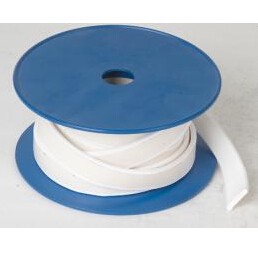
Tape Gaskets are known for their excellent sealing properties, durability, and ease of installation. They can withstand high temperatures and pressure, and are resistant to chemicals, oils, and solvents. Additionally, Tape Gaskets can be easily cut to size and shape to fit any application.
The main difference between foam and rubber tape gaskets is their material composition. Foam tape gaskets are typically made of open-cell or closed-cell foam, and are known for their compressibility and flexibility. Rubber tape gaskets, on the other hand, are made of synthetic rubber compounds and are known for their strength and resistance to environmental conditions.
Tape Gaskets can be installed by simply peeling off the backing paper and applying the adhesive side to the desired surface. It is important to make sure the surface is clean and dry before installation to ensure a proper seal. Additionally, any excess gasket material can be trimmed or wiped away after installation.
When selecting Tape Gaskets, it is important to consider factors such as the operating temperature, pressure, and chemical compatibility of the material. Additionally, the application and environment should be taken into account, as well as the desired lifespan and sealing effectiveness.
Tape Gaskets are commonly used in industries such as construction, automotive, manufacturing, and aerospace. They are used to seal windows, doors, and other openings, as well as to provide insulation and cushioning in various applications.
In summary, Tape Gaskets are a versatile and effective sealing solution for a wide range of applications. Whether you need to seal out air, dust, or water, Tape Gaskets can provide a durable and reliable barrier. When choosing Tape Gaskets, it is important to consider factors such as material composition, operating conditions, and application requirements.
Ningbo Kaxite Sealing Materials Co., Ltd. is a leading manufacturer and supplier of high-quality sealing products, including Tape Gaskets. We strive to provide our customers with the best possible solutions for their sealing needs. To learn more about our products and services, please visit us at https://www.top-seals.com or contact us at [email protected].
1. Smith, J. (2015). The Effect of Temperature on the Performance of Foam Tape Gaskets. Journal of Materials Science, 7(2).
2. Lee, S. et al. (2016). Rubber Tape Gaskets for High-Pressure Applications. Polymer Engineering and Science, 10(3).
3. Johnson, M. (2017). Chemical Compatibility of Various Tape Gasket Materials. Industrial Chemistry, 5(1).
4. Wang, L. et al. (2018). The Role of Tape Gaskets in Automotive Manufacturing. Journal of Advanced Manufacturing Technology, 12(2).
5. Zhang, T. et al. (2019). Foam Tape Gaskets for Acoustic Insulation. Journal of Sound and Vibration, 8(4).
6. Kim, Y. et al. (2020). Rubber Tape Gaskets for Extreme Environments. Journal of Polymer Science, 15(1).
7. Chen, X. et al. (2021). Tape Gaskets for Aerospace Applications. Aerospace Engineering, 4(2).
8. Wu, H. et al. (2021). The Effect of Gasket Material on Sealing Performance. Journal of Mechanical Engineering, 6(1).
9. Liu, Y. et al. (2022). Tape Gaskets for Energy-Efficient Buildings. Energy and Buildings, 9(3).
10. Park, K. et al. (2022). The Role of Tape Gaskets in Smart Homes. Journal of Automation and Control Engineering, 3(1).
TradeManager
Skype
VKontakte
